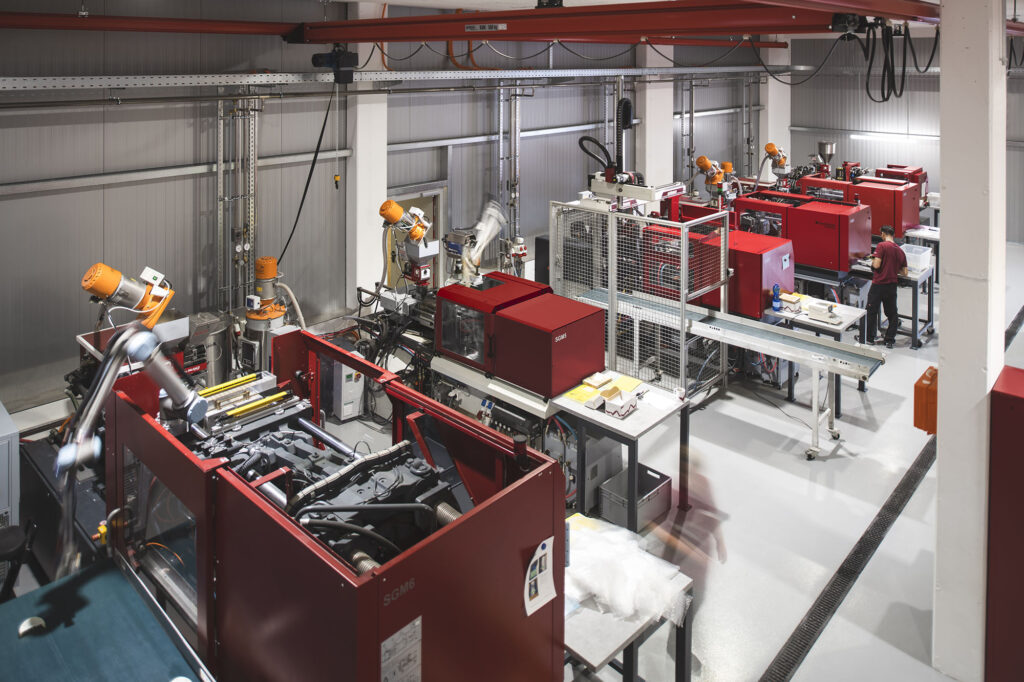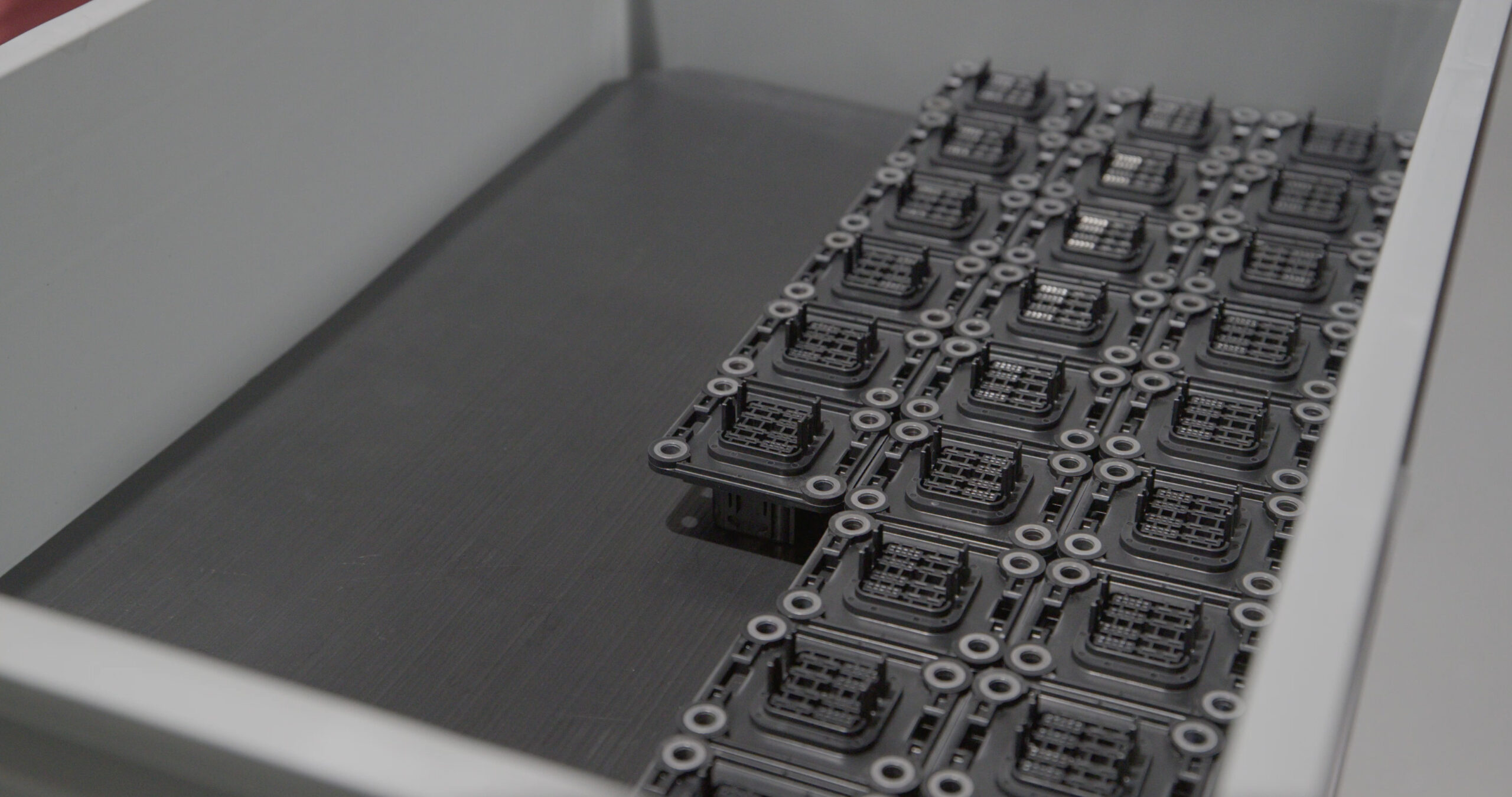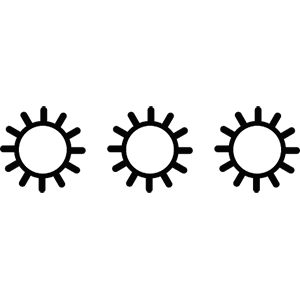To accommodate our extensive portfolio’s requirements and eschew superfluous time loss, we operate a well-synchronised suite of thirteen dedicated injection moulding machines. With a clamping force ranging from 10t to 200t, we can administer injection volumes as high as 380cm3 for thermoplastics and 90cm3 for liquid silicones. Basically, we segregate our injection moulding production into four divisions: thermoplastics, silicones, as well as MIM and CIM materials.
Thermoplastics
Thermoplastics are polymers that can be plastically reshaped within a specified temperature range. This deformation is reversible.
The base material is supplied as granulate, which is then dried and, depending on the requirements, endowed with various additives like dyes or flame retardants. Within the injection segment of the moulding machine, the plastic is liquified under intense heat and pressure, and subsequently injected into a mould. Following a certain cooling period, the part can be ejected from the mould.
Silicones
LSR silicone rubbers (Liquid Silicone Rubber) are liquid silicones that always consist of two components. During the injection process, these two components are uniformly blended within the chilled injection segment, accompanied by a colour paste tailored to customer stipulations. The viscosity of the mixture is roughly akin to that of water. To prevent undue over-moulding, moulds must therefore be fabricated with very tight tolerances. Since this ‘tightness’ impedes the expulsion of air from the cavity, a vacuum is drawn following the sealing of the mould halves.
The moulds are heated to roughly 200°C, resulting in relatively rapid cross-linking of the silicone. Once altered-linked, the shape of the parts can no longer be changed.
MIM/CIM
In Metal Injection Moulding (MIM) and Ceramic Injection Moulding (CIM), metal or ceramic powder is blended with a binder and then injected into a mould in an injection moulding process analogous to that applied to thermoplastics. However, the parts are not deemed complete following the injection process. In a downstream process, the preforms are chemically and thermally de-bonded and thereafter sintered.












